River Otters and More at the West Fork

above photo credit: vtfishandwildlfe.com
by Linda Martinson
Blue Ridge Naturalist
The West Fork of the French Broad River runs along the lowest part of Richland Ridge for about a mile, along the site of a former farm, in an area of about 100 acres. The lowest section along the West Fork is bottomland, basically a floodplain. There are three sections of West Fork bottomland in the lowland area of Richland Ridge, all of critical ecological importance because there are so few wetland areas left along the river:
1) the bottomland floodplain on the site of a former farm;
2) a Montane Alluvial Forest community at the north end of the former farm site;
3) and a wetlands area at the south end.
The old farm along the river was established in the 1940s and operated in various ways until the 1980s. An organic garden was established there after the property was added to Richland Ridge land as part of our conservation easement in 2003. The bridge across the river was not built until the early 1950’s. This river floodplain site was likely used previously by the Cherokee Indians for some agricultural purposes and for the harvest of river cane for basketry. It is also likely that they burned the area occasionally to keep the forest from encroaching just as we have to mow it once or twice a year to keep it open.
It would have been necessary to drain the front meadow beside the river in order to farm it or to use it for pasture in the 1940s. This was not uncommon and prior to the introduction of plastic pipe, clay tile or concrete pipes were installed underground to drain cleared bottomland fields. This previous farmland area is now reverting back to wetlands which, for a conservation area, serves a far better purpose as wildlife habitat than a farm. There is enough arable land in the field for an organic garden, however, so we can still call it the farm site.
Montane Alluvial Forest areas are communities of floodplains in the mountain region and foothills of the upper Piedmont and Southern Appalachians. They are “communities” because they have a vibrant mix of plant and animal species. Our Montane Alluvial community is along Richland Creek just before it melds with the West Fork. For the past several years, beavers have built dams in the creek forming a series of attractive terraced pond areas dominated by early succession wetland plants such as cattail (Typha latifolia), American bur-reed (Sparganium americanum), bulrushes, and mats of soft rush. This is rich habitat with its various stages of wetland succession.
The wetlands area at the south end of the property is a rich marshland strip also created by beavers. (Note: The last native beaver was trapped in North Carolina in 1897 to use its pelt for a beaver hat, all the rage then. Beavers were reintroduced in the 1930s by the agency which is now the NC Wildlife Resources Commission.) Now, like the other Richland Ridge wetlands along the West Fork, this area is also prime wildlife habitat, especially for birds, with its freshwater sources and small ponds surrounded by a productive marshy strip.
Some increasingly rare wildflowers and other plants have been identified in all three of these wetland areas along the West Fork. These include native river cane, Turk’s Cap lily, ironweed, sedges and rushes, clematis, and Jack-in-the-Pulpit. And several milkweed plants have been planted at the old farm site to attract monarch butterflies, listed as endangered. Because of the ecological diversity in the wetland areas, there are several other butterfly species in the area including the Diana fritillary butterfly, listed as threatened, as well as a healthy population of spring peepers. A significant threat, however, to all these wildflowers, plants and butterflies is a thriving deer population. If we don’t maintain alluvial and marshy areas, deer will have open access to the tender and unique flowers and other plants in our old farm site along the river.
Several sections of native river cane (Aruncinaria tecta) remain along the Richland Ridge section of the West Fork. Canebrakes (large contiguous areas of river cane) form an amazingly effective riparian buffer along rivers and streams protecting river banks from erosion and flooding. A significant buffer of river cane can reduce nitrogen and phosphorus run-off into rivers and streams by as much as 80%.
River cane was historically abundant in western North Carolina, but unfortunately nearly 98% of these canebrakes along our rivers are now gone. River cane is a hardy and handsome bamboo species (the only one in the U.S.) that has both significant ecological and cultural value. We are fortunate there is some river cane persisting along our section of the West Fork despite several encroaching invasive plant species, e.g., stilt grass.
Abundant riparian areas with significant stands of river cane provide places of refuge, foraging, and nesting for many animals and birds and keep the rivers healthy, too. And it is the Montane Alluvial Forest community and the other wetland areas at Richland Ridge, largely created by beavers, that are now among the most biologically diverse natural areas along the West Fork of the French Broad River. One definitive sign that our stretch of the West Fork is healthy is that we have river otters, always a strong indication of riparian vibrance.
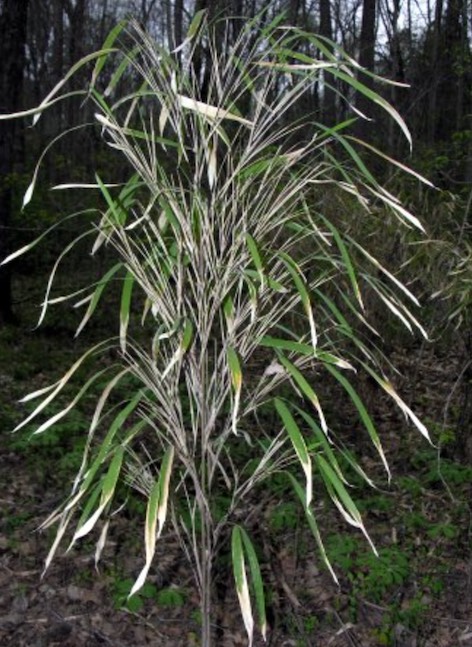
Carolina Nature
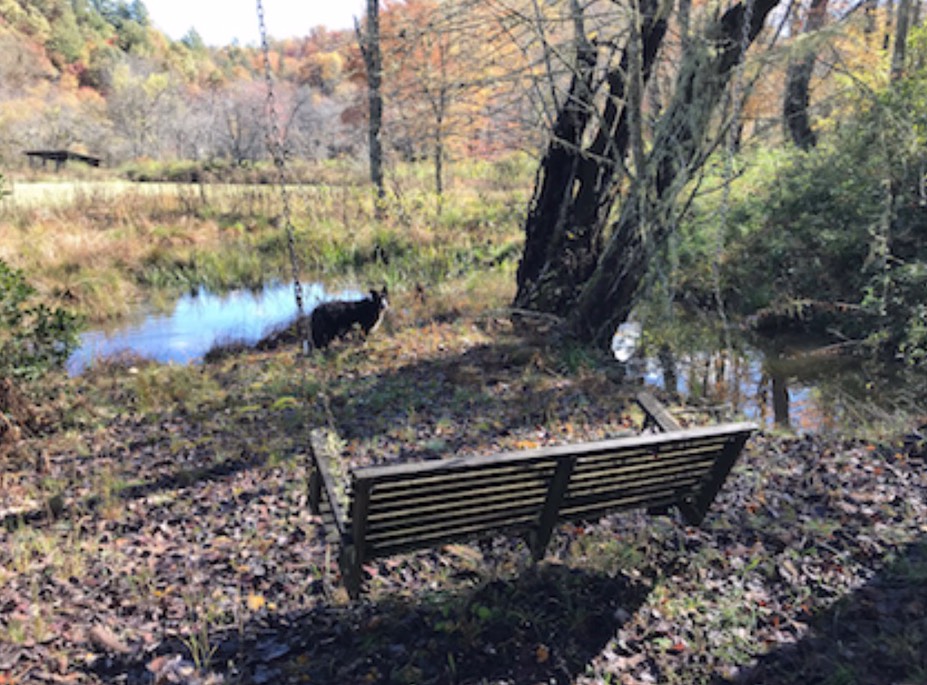
LM Photo
At one time river otters were one of the most common animals in the United States and Canada, but by the late 1500s, European settlers began trapping otters as well as beavers for their pelts. By the late 1930s, otters were extinct in Western North Carolina. To restore river otters, the N.C. Wildlife Resources Commission released 49 river otters in the western part of the state from 1990-1995 and more in the Great Smoky Mountains National Park. Now our otter population in Western North Carolina and throughout the state is fully restored and considered abundant.
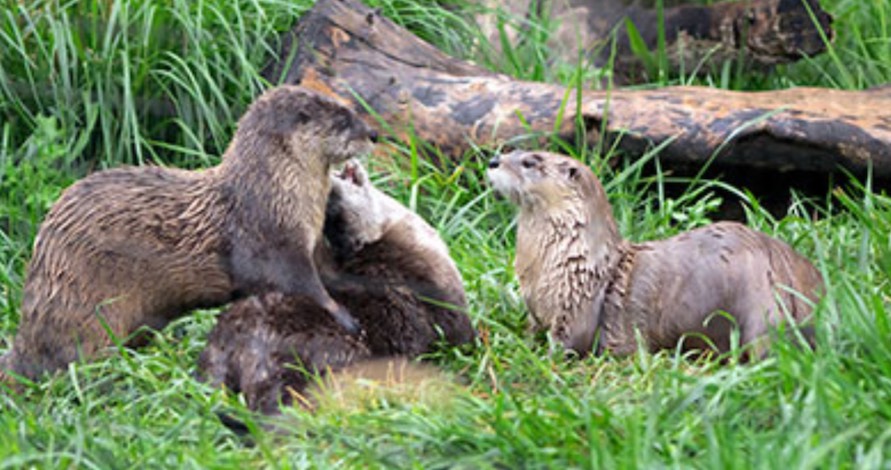
River otters are one of 13 species of the weasel family (Mustelidae). The USA and Canada have two species of otters: our North American River otter (Lontra canadensis), usually just referred to as River otters, and the Sea Otter (Enhydra lutris). River otters are intelligent, curious, expressive, sleek and handsome with thick, soft, water-repellent fur, and they search for clean water to call home, obviously rivers but sometimes swamps, lakes, and marshes. River otters are opportunistic carnivores, and they are not fussy eaters. They mainly feed on slow moving fish, any species, but will also eat crabs, crayfish, amphibians, small mammals, aquatic beetles, and even birds.
Generally river otters are out there for a good time, and appropriately a group of otters is often called a romp. When they are not eating (they have a high metabolism), they often play, sliding down river banks or chasing each other. Otters have long, strong and slim bodies with short legs, webbed feet and a long, flexible tail. Their total length as adults is between 2.5 and 5 feet including their tail, and they usually weigh from 13 to 20 pounds; female otters are slightly smaller than males. River otters are the smallest of all marine mammals and based on fossil remains, they have been around for at least five million years.
Up to 40 percent of an otter’s total body length is its tail. With its long, muscular tail and powerful webbed hind feet, a river otter can swim as fast as 8 miles per hour and dive as deep as 36 feet or more. And they can hold their breath for as long as five minutes. Otters use their small and dexterous front feet to guide them when they paddle through the water, and their eyes and ears are high on their heads so they can see where they are going. When they swim underwater, a translucent third eyelid closes to protect their eyes. Their ears and nostrils also closed when they are underwater.
River otter swimming Pinterest
Baby river otters in den Wildlife Illinois
For relatively small critters, otters eat quite a bit—up to 20% of their body weight daily. And when a female otter is nursing, she will consume even more. They spend about five hours a day searching for and eating food. They are not fussy eaters but as carnivores at the top of the food chain, they eat mostly any species of fish and also crabs, crayfish, amphibians, small mammals, aquatic beetles, and even birds. Otters are flexible about where they live, too. For their dens, also called holts, river otters use anything from hollow logs, piles of boulders and abandoned beaver lodges. Usually their dens are well hidden and located close to water.
River Otters are gregarious animals and generally form two types of social groups: adult females with their young of the year and perhaps a helper or two, and groups of primarily males. There isn’t much definitive information about river otter breeding. Some studies indicate that river otters pair up for only a few months during the breeding season and then move on, but other research indicates that they mate for life. It is not clear when actual breeding typically occurs because there is a delayed implantation of nine to eleven months, but actual gestation takes about 60 days. River otters typically have two to four pups sometime between March and May.
Female otters prepare exceptionally clean dens for their pups which arrive totally helpless, blind, and toothless. They are silky black, weighing about 4 to 6 ounces, and are rather long, 8 to 11 inches at birth. Usually the males are shooed away until the pups leave their den at about two months. Then they return and help raise the pups. The pups are usually not weaned to solid food for another few months, and they remain in more or less a family unit for seven to eight months. They can swim when they are about seven weeks old, but their mothers have to coax them into the water at first. In the late fall, they leave their maternal den to establish their own territories. Mature otters tend to live alone or as a pair, but they socialize in groups. River otters typically live 8 to 9 years in the wild, but some otters live up to 12+ years.
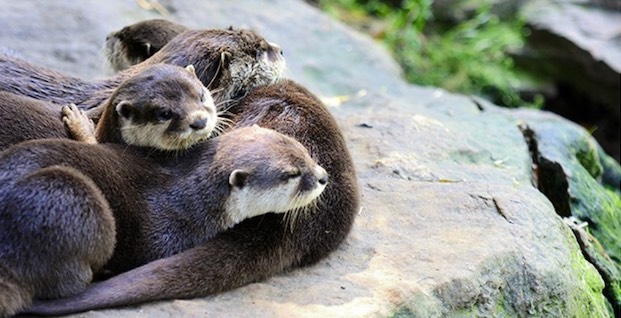
River otters spend most of their time foraging and exploring their home range, but they travel too, up to 150 miles a year, both on land and in the water. One hypothesis is that they move often so that they don’t deplete the food supply in any one location.
Otters are active communicators. They vocalize, depending on how comfortable or threatened they are, with shrill chirps, soft chuckles, low grunts, nasal snorts, hissing, and screams. Apparently their screams are hair-raising and can be heard as far away as 1.5 miles across water. They also communicate by leaving scent posts; apparently their scent is memorable, smells like violets? and dogs like to roll in it. It also has a special name: a single otter poop is called a staint. An active river otter population is an indicator of a healthy habitat, not just for otters, but also for humans and other species. I hope, however, that I never step in a staint or hear an otter scream.
References:
“Strategic Conservation Planning for Richland Ridge, a Conservation Easement Development”
Blue Ridge Naturalist Certificate of Merit Project Report Linda Martinson July 2014
“River Otters” PAWS.org April 2015
“River Cane Propagation Connects Past and Future” asheville.com News Monday, December 16, 2019
treehugger.com “15 amazing facts about otters” Jaymi Heimbuch. November 2020.
World Animal Protection “Animals that Mate for Life” 2/12/2020
northernwoodlands.org “The Odor Side of Otters” Susan Shea September 2014.
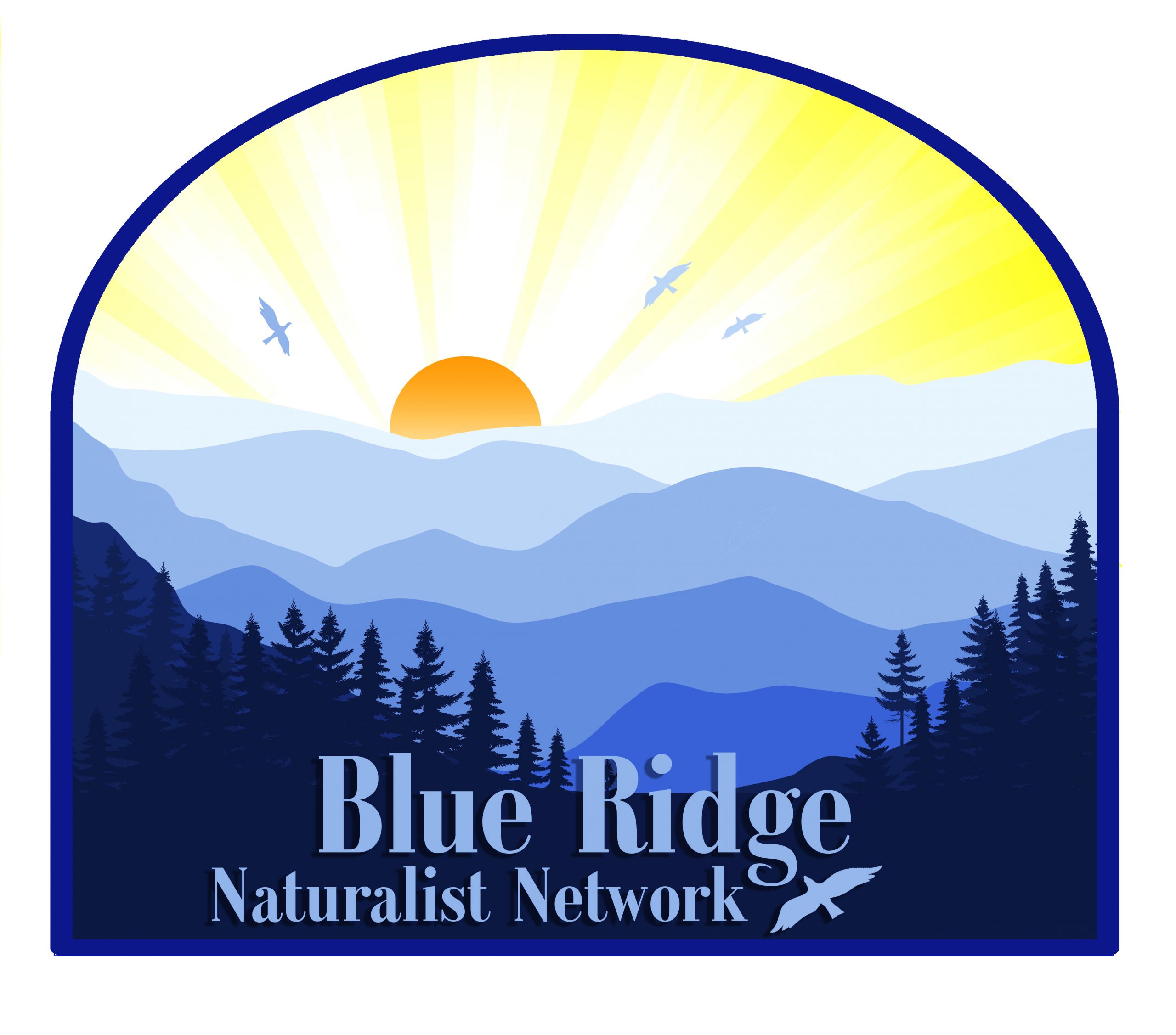
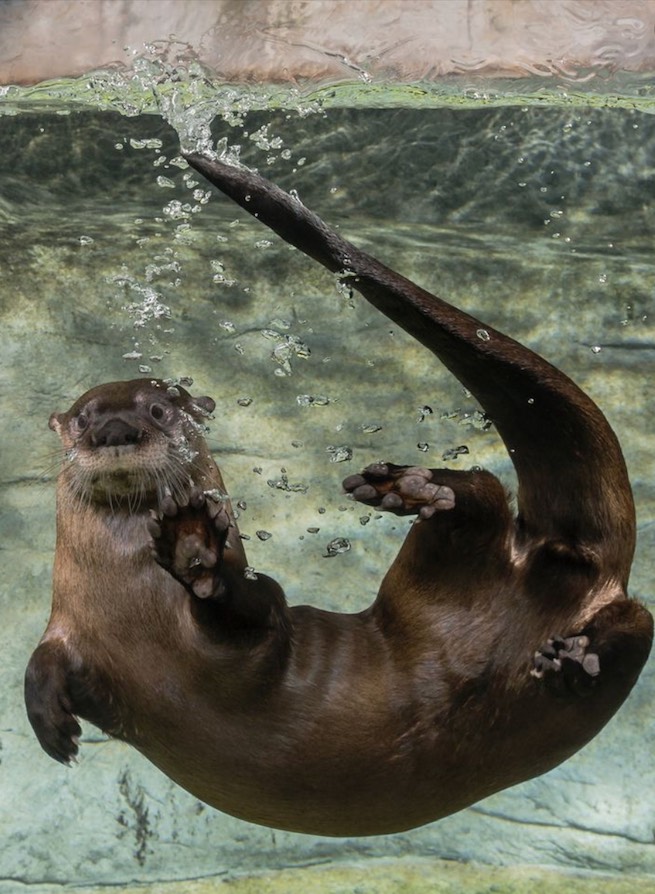

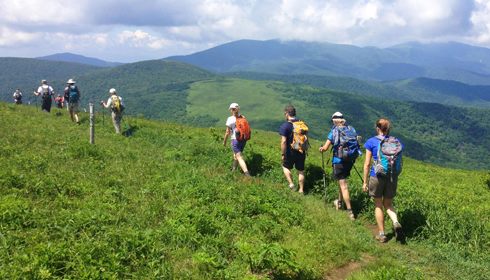




26 comments